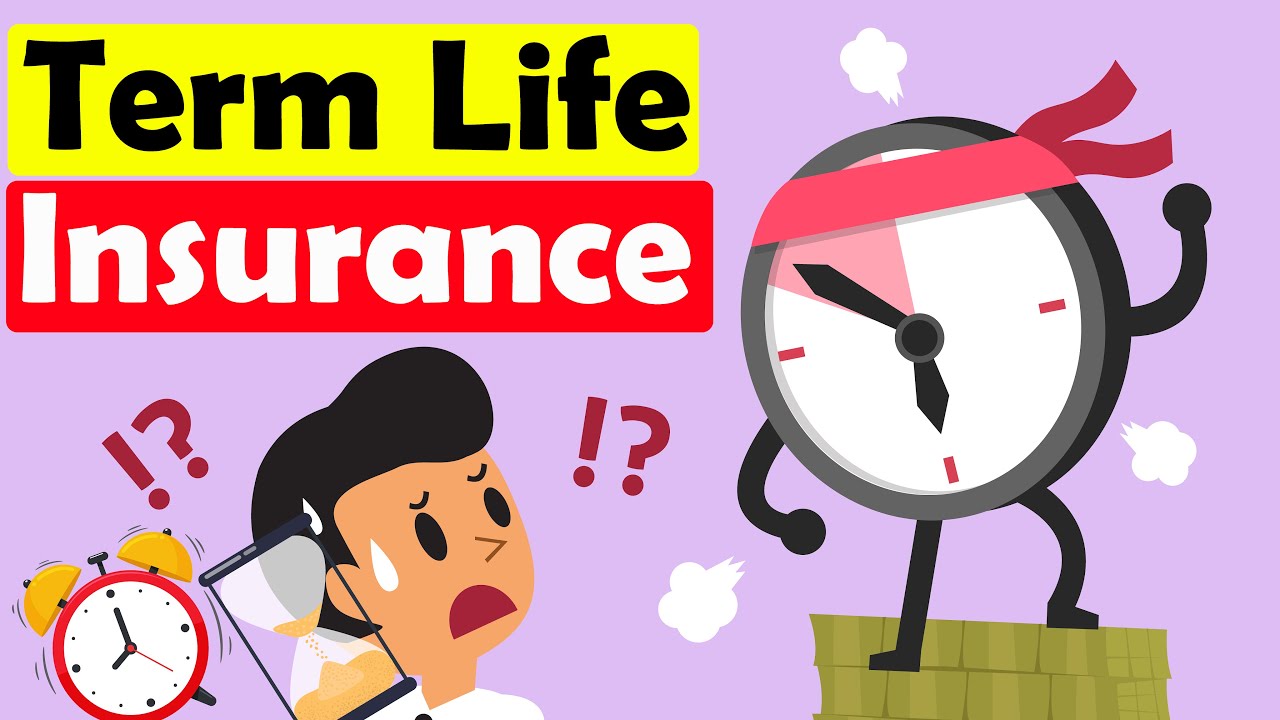

Finance
How To Cancel Term Life Insurance
Published: November 10, 2023
Looking to cancel term life insurance? Discover the steps and considerations involved in terminating your policy. Get expert financial advice now!
(Many of the links in this article redirect to a specific reviewed product. Your purchase of these products through affiliate links helps to generate commission for LiveWell, at no extra cost. Learn more)
Table of Contents
Introduction
Term life insurance is a type of life insurance that provides coverage for a specified period, typically ranging from 10 to 30 years. It offers a financial safety net to the policyholder’s beneficiaries in the event of their untimely death. However, life is unpredictable, and circumstances may arise where you find it necessary to cancel your term life insurance policy.
In this article, we will explore the process of canceling term life insurance and provide you with a step-by-step guide on how to navigate this often complex task. We will also discuss alternative options you may consider before making the final decision to cancel.
Before we delve into the details, it’s important to note that canceling a term life insurance policy should not be taken lightly. Life insurance is designed to protect your loved ones in times of need, and canceling a policy prematurely can leave them vulnerable. It is crucial to carefully evaluate your circumstances and explore all available options before deciding to cancel.
That being said, if you have determined that canceling your term life insurance policy is the best course of action for your specific situation, this guide will provide you with the necessary information to proceed.
Understanding Term Life Insurance
Before you embark on the process of canceling your term life insurance policy, it’s essential to have a clear understanding of what term life insurance entails.
Term life insurance is a type of life insurance that provides coverage for a specific period, known as the “term.” Unlike permanent life insurance policies, such as whole life or universal life insurance, term life insurance does not build cash value over time. It is purely designed to provide a death benefit to beneficiaries if the insured individual passes away during the term of the policy.
Term life insurance policies are typically purchased with a specific term length, such as 10, 20, or 30 years. During this term, the policyholder pays regular premiums to keep the policy active. If the policyholder passes away during the term, the insurance company pays out a death benefit to the designated beneficiaries.
One of the main benefits of term life insurance is its affordability compared to permanent life insurance options. Since term life insurance only provides coverage for a set period, the risk of the insurance company having to pay out a death benefit is lower, making it more cost-effective.
It’s crucial to note that term life insurance policies do not offer any cash value or investment component. If you cancel your policy before the term expires, you will not receive any return of premium or cash value from the insurance company.
Having a clear understanding of your term life insurance policy will help you make an informed decision about canceling it and exploring other options that align with your changing needs and circumstances.
Reasons for Canceling Term Life Insurance
There are various reasons why you might consider canceling your term life insurance policy. Life is full of unexpected changes, and what made sense when you initially purchased the policy may no longer be applicable. Here are some common reasons for canceling term life insurance:
- Changed Financial Situation: If your financial circumstances have significantly improved since you purchased the policy, you may find that the coverage amount is no longer sufficient to meet your needs. In this case, canceling your existing policy and purchasing a new one with a higher coverage amount could be a viable option.
- Life Events: Certain life events, such as paying off your mortgage, your children becoming financially independent, or inheriting a significant amount of money, may render the need for life insurance unnecessary. Reevaluating your coverage needs in light of these life events can help you decide whether canceling your policy is the right choice.
- Health Improvements: If you have made significant improvements to your health since purchasing your term life insurance policy, you may be eligible for lower premiums on a new policy. Canceling and reapplying for a policy based on your improved health could result in substantial cost savings over the long term.
- Changing Priorities: Your priorities in life may shift over time, and what was once a priority, such as providing financial security for dependents, may no longer hold true. If you find yourself in a situation where the need for life insurance has diminished, canceling the policy can free up funds for other financial goals.
- Financial Constraints: If you are facing financial constraints and finding it difficult to keep up with the premium payments, canceling your term life insurance policy might be a way to alleviate some financial burden. However, it’s important to carefully weigh the potential loss of coverage against the short-term relief provided by canceling the policy.
When considering canceling your term life insurance policy, it’s essential to assess your current situation, evaluate your coverage needs, and consult with a financial advisor or insurance professional. They can provide valuable insights and help determine whether canceling the policy is the right decision for you.
Contacting the Insurance Provider
Once you have made the decision to cancel your term life insurance policy, the first step is to contact your insurance provider. It’s important to reach out to them directly to inform them of your intention to cancel and to understand their specific cancellation requirements.
You can typically find the contact information for your insurance provider on your policy documents or statements. You can call their customer service line or visit their website to obtain the necessary contact information.
When contacting the insurance provider, be prepared to provide them with the following information:
- Your policy number: This unique identifier helps the insurance company locate your specific policy within their system.
- Your personal information: Provide your full name, address, and contact details to verify your identity.
- Reason for cancellation: Briefly explain the reason(s) why you have decided to cancel your policy. This information helps the insurance company understand your circumstances and may assist them in offering any potential alternatives.
It’s important to keep in mind that insurance providers have different procedures and processes for canceling policies. They may also require additional documentation or information to initiate the cancellation process.
During your conversation with the insurance provider, take note of any instructions, requirements, or deadlines provided to ensure a smooth cancellation process. Ask any questions you may have regarding the cancellation process, such as the expected timeline for completion and any potential refund of premiums.
It’s advisable to document the date, time, and details of your conversation with the insurance provider for future reference. This can be helpful in case any discrepancies or issues arise during the cancellation process.
By proactively reaching out to your insurance provider and following their specific instructions, you can initiate the cancellation process smoothly and efficiently.
Requesting Cancellation
After contacting your insurance provider and discussing your intention to cancel your term life insurance policy, the next step is to formally request the cancellation. This request is typically made in writing, either through a physical letter or an email, addressing it to the appropriate department or individual within the insurance company.
When crafting your cancellation request, include the following information:
- Your policy number: Clearly state your policy number to help the insurance company identify your specific policy.
- Your full name and contact details: Provide your complete name, address, phone number, and email address for identification purposes.
- Date of the request: Indicate the date when you are submitting the cancellation request.
- Reason for cancellation: Succinctly explain the reason(s) why you have decided to cancel your term life insurance policy. This helps provide context to the insurance company for their records.
- Signature: Sign the cancellation request to authenticate it.
Make sure your cancellation request is clear, concise, and professional. Double-check for any spelling or grammatical errors before submitting it. Additionally, retain a copy of the cancellation request for your records.
Once you have composed the cancellation request, submit it to the appropriate department or individual within the insurance company. Inquire with your insurance provider about the correct mailing address or email address for cancellation requests.
It’s recommended to send the cancellation request via certified mail or through a trackable email service to ensure that it reaches the insurance company and you have proof of delivery. This provides you with an added layer of security and documentation in case any disputes arise in the future.
By formally requesting cancellation through a written communication, you provide a clear record of your intentions and initiate the official process of canceling your term life insurance policy.
Submitting Required Documents
Once you have requested the cancellation of your term life insurance policy, the insurance provider may require you to submit certain documents to complete the cancellation process. These documents serve as proof of your identity and ensure that the cancellation request is valid.
The specific documents required may vary depending on the insurance provider and their internal policies. However, some common documents often requested during the cancellation process include:
- Policy surrender form: Some insurance companies may require you to fill out a policy surrender form, which serves as a formal request to cancel the policy. This form typically includes details about the policyholder, the policy number, and the reason for cancellation.
- Proof of identity: To verify your identity, the insurance provider may require you to submit a copy of your government-issued identification, such as a driver’s license or passport.
- Proof of ownership: If you are canceling the policy on behalf of the policyholder (e.g., in the case of a deceased policyholder), you may need to provide documentation proving your authority to act on their behalf, such as a death certificate, probate documents, or power of attorney.
- Policy documents: The insurance provider may ask you to return the original policy documents or any relevant paperwork associated with the policy. This ensures that all physical documentation is accounted for and officially canceled.
It’s important to carefully review the insurance provider’s specific requirements and instructions for submitting these documents. They may specify whether physical copies need to be mailed or if digital copies are acceptable via email or an online portal.
When submitting the required documents, make sure to include your policy number and contact information on each document to avoid any confusion or delays in processing. Keep copies of all the submitted documents for your records.
If you are unsure about any of the required documents or have questions regarding the submission process, don’t hesitate to reach out to your insurance provider’s customer service for clarification and assistance.
By promptly submitting the necessary documents, you help facilitate the cancellation process and ensure that all requirements are met for a smooth and successful cancellation of your term life insurance policy.
Confirming Cancellation
Once you have submitted the required documents to cancel your term life insurance policy, it is important to follow up with the insurance provider to confirm that the cancellation has been processed and that your policy is officially terminated.
Confirming the cancellation helps ensure that you are no longer responsible for making premium payments and provides peace of mind that your policy is effectively canceled. Here are the steps to confirm the cancellation:
- Contact the insurance provider: Reach out to the insurance provider to inquire about the status of your cancellation request. Refer to your policy number and any other relevant information to help them locate your account quickly.
- Ask for confirmation: Request confirmation that your policy has been canceled and ask for documentation or an acknowledgement letter to serve as proof of cancellation. This documentation can be useful for your records and may be required in the future for any potential disputes.
- Verify premium payments: Confirm that no further premium payments are due. It is important to ensure that the insurance provider has stopped billing you for future premiums to avoid any unnecessary charges.
- Review policy termination date: Take note of the official termination date of the policy. This is the date from which your coverage ceases, and you are no longer entitled to any death benefit if applicable.
If the insurance provider confirms the cancellation of your policy, it is advisable to keep a copy of the confirmation letter or email in a safe place. This will serve as proof of the cancellation should any issues arise in the future.
In case of any discrepancies or if the insurance provider fails to confirm the cancellation, document all communication with dates, times, and names of the individuals you have spoken to. This documentation will be helpful if you need to escalate the matter or seek resolution through regulatory channels or legal means.
By confirming the cancellation of your term life insurance policy, you can have peace of mind knowing that your policy has been terminated and that you are no longer obligated to fulfill any premium payments.
Impact of Cancellation on Coverage and Premiums
Canceling your term life insurance policy can have several important implications regarding your coverage and premiums. It is essential to understand these impacts before proceeding with the cancellation.
Loss of Coverage: Once your term life insurance policy is canceled, you will no longer have coverage in the event of your death during the term specified in the policy. This means that your beneficiaries will not receive a death benefit if you pass away after the policy cancellation.
No Cash Value: Term life insurance policies do not accumulate cash value over time, unlike permanent life insurance policies. Therefore, canceling your term life insurance policy means that you will not receive any cash value or return of premiums from the insurance company.
Potential Premium Refunds: Depending on the terms and conditions of your policy, you may be eligible for a refund of a portion of your premiums if you cancel before the end of the policy term. However, keep in mind that there may be administrative fees or other deductions that reduce the refund amount.
Loss of Future Insurability: If your health or other circumstances change after canceling your term life insurance policy, obtaining a new policy or reinstating the previous policy may be more challenging or expensive. It’s important to carefully consider future insurability implications before canceling your policy.
Reapplication Requirements: If you later decide to purchase a new life insurance policy after canceling, you will typically need to go through the application process again, including providing updated medical information and undergoing any necessary assessments, such as a medical exam.
Impact on Premiums: Canceling your term life insurance policy will eliminate future premium payments. However, if you decide to replace the canceled policy with a new one in the future, your premiums could be higher based on factors such as age, health, and any changes in personal circumstances since the cancellation.
Before canceling your term life insurance policy, consider the impact on your coverage and premiums carefully. Evaluate your current and future insurance needs, financial situation, and weigh the cost-benefit analysis of canceling the policy against potential future risks.
Consulting with a financial advisor or insurance professional can help you assess the potential short-term and long-term implications of canceling your policy and explore alternative options that may better suit your changing needs.
Alternative Options to Cancellation
If you are considering canceling your term life insurance policy but still have a need for some form of coverage, there are alternative options you can explore before making a final decision. These alternatives can help address your changing needs without the complete termination of your life insurance coverage. Here are some alternatives to consider:
- Convert to a Permanent Policy: Depending on the terms and conditions of your term life insurance policy, you may have the option to convert it to a permanent life insurance policy, such as whole life or universal life insurance. This allows you to maintain coverage for the long term, with the added benefit of cash value accumulation.
- Term Extension: If your existing term life insurance policy is about to expire, you may have the option to extend the term for a predetermined period. This can provide you with continued coverage without the need to purchase a new policy.
- Decrease Coverage Amount: If your insurance needs have changed or you no longer require the same level of coverage, you can request a decrease in the coverage amount. This can reduce your premium payments while still maintaining some level of financial protection for your beneficiaries.
- Policy Rider Additions: Instead of canceling your policy, you may be able to add additional policy riders to customize your coverage. Riders can provide benefits such as accelerated death benefits, critical illness coverage, or disability income protection, depending on your needs.
- Additional Policies: In some cases, it may be more advantageous to take out a new life insurance policy rather than canceling the existing one. This can allow you to tailor coverage amounts and policy terms to your current needs while maintaining some level of protection.
- Explore Other Insurance Options: Depending on your circumstances, you may find that other types of insurance, such as disability insurance, long-term care insurance, or supplemental health insurance, better address your specific needs. Consulting with an insurance professional can help you assess the available options in light of your changing situation.
Before making any decisions, carefully evaluate the costs, benefits, and implications of these alternative options. Consider your current and future financial needs, any medical or health-related factors, and consult with a knowledgeable insurance advisor to determine the best course of action.
Remember that each alternative option has its own specific terms, conditions, and costs, so it’s important to thoroughly review and understand the details of any alternatives before proceeding.
Conclusion
Canceling a term life insurance policy is a decision that should not be taken lightly. It’s crucial to carefully evaluate your circumstances, consider alternative options, and seek professional advice before proceeding with cancellation. Understanding the implications and potential consequences of cancelation is vital to ensure that you are making an informed decision.
If you have determined that canceling your term life insurance policy is the best course of action, it is important to follow the proper steps. Contact your insurance provider, submit the required documents, and confirm the cancellation to ensure that the process is carried out smoothly and effectively.
However, before canceling your policy, explore alternative options that may better address your changing needs. Converting to a permanent policy, considering term extensions, decreasing coverage amounts, or exploring additional policies and riders can offer flexibility and continued financial protection.
Ultimately, the decision to cancel your term life insurance policy should align with your financial goals, lifestyle changes, and coverage needs. Consult with a financial advisor or insurance professional to evaluate your options and make an informed choice for your specific situation.
Remember, life insurance serves as a financial safety net for your loved ones, providing them with financial protection in challenging times. Whatever decision you make, it’s important to prioritize the well-being and security of your loved ones while considering your own financial circumstances.
By carefully weighing the pros and cons, exploring alternative options, and seeking expert guidance, you can navigate the process of canceling your term life insurance policy in a way that best suits your current needs and future goals.














